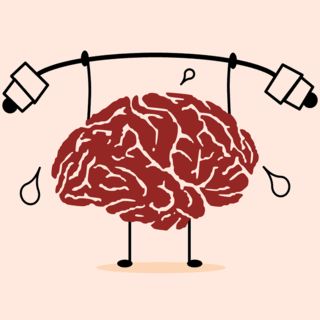Memory And Mnemonics
May 21, 2019 • 184 views
In our day-to-day life, we remember many things and our previous experiences influence our behaviour constantly. The complex process that involves acquiring, storing and recalling information is called memory. It is an active system that receives information from the senses, organises and alters it as it stores it away and then retrieves the information from storage. One of the first psychologists to study human memory through experimental methods was Herman Ebbinghaus, who first used different kinds of tasks to study memory, the most renowned among them being the use of non-sense syllables.
Memory involves the following 3 processes:
Encoding- It is the primary process where the external stimulus is registered by the sense organs and converted into neural waves through the phenomenon of transduction. This encoding can be visual, auditory, tactile or semantic. Consolidation, a part of the process of encoding, refers to the event of stabilizing a memory trace after the initial acquisition.
Storage- It is the process of placing the encoded information into a relatively permanent mental reservoir for later recall.
Retrieval- It is the process of recalling information that has been placed in the storage. It is of 2 types- recall and recognition. While recognition needs a simple familiarity decision, recall is a two-stage process requiring search for recognition and then active reconstruction of the information.

Though every individual is born with varying degrees of memorisation capacity, it can be improved through training and the learning and practice of mnemonics. Mnemonics are strategies for improving memory. The word ‘mnemonic' has been derived from the Greek word ‘mnēmonikos' meaning ‘of memory, or relating to memory' and is related to Mnemosyne, the Greek goddess of memory.
Now let us go through a few of the mnemonic techniques:
Acronyms- They are names made out of the first letter of several words. For example, to remember the colours of the spectrum, we use VIBGYOR, which gives the first letters of the colours- violet, indigo, blue, green, yellow, orange and red in the correct sequence.
Acrostics- They are sentences or phrases in which each word begins with a letter that acts as a memory cue. For example- the acrostic ‘Please Excuse My Dear Aunt Sally’ denotes the order of mathematical operations and stands for parentheses, exponents, multiplication, division, addition and subtraction.
Narrative methods- It involves making up a story to remember a list of words. Different images containing the items to be remembered are connected in a sequence to form a story.
Rhymes- They are effective mnemonics. The rhyme ‘Thirty days hath September' for example, helps us to remember the number of days in each month.
Method of loci- Popularly known as ‘The Memory Palace', this method involves the learner visualising a room or a familiar path through a building and mentally associating information with particular locations or objects along the way. Later, while recalling the information, they mentally do the walk again, noting each piece of information along the path.
Peg word method- When using this method, people first remember a rhyme that associates numbers with words: one is a bun, two is a shoe, three is a tree, four is a door, five is a hive, six is sticks, seven is heaven, eight is a gate, nine is a vine, ten is a hen. Then they visualise each item on their list being associated with a bun, a shoe, a tree etc.
Chunking material- It involves converting bigger bits of information into smaller, familiar pieces. Phone numbers can be easily remembered by chunking them into two, three or four-digit segments.
A study conducted in the University of Florida in 2017 to gauge the effectiveness of mnemonics pointed out that 71.2 % of the students found the techniques helpful in remembering the material better. Other than mnemonics, various other methods of improving memory include persistent rehearsal of the information, development of keen interest and attention towards the learning material, lifestyle improvements (adequate sleep, balanced diet, sufficient physical exercise), the SQ4R technique of Thomas and Robinson etc.

